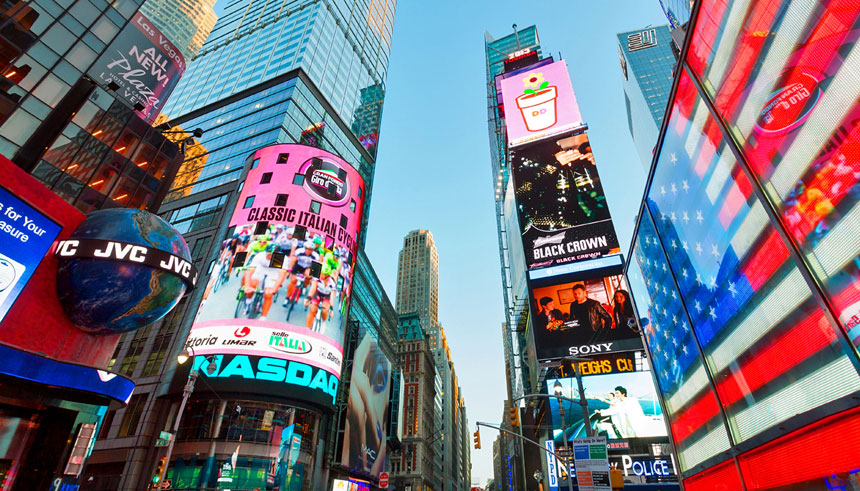Insights
Global Branding: How to Create and Spread Your Message
By Melody Yuan

Finding the right balance between creating a global brand and connecting at a local level.
In this accelerated and cutthroat world of business, using global branding to catch the eye of consumers is paramount to a company’s success.
Take Yum! Brands for example. The parent company of fast food chains like KFC, Taco Bell, and Pizza Hut continues to break ground and gain popularity in China and India. Despite its identity in the U.S. as a fast food conglomerate, Yum! Brands has successfully branded its chains as pricier alternatives to the area’s local cuisine. By touting its chains as family-friendly restaurants rather than as fast food joints, Yum! Brands was able to tap into the growing middle class and younger demographic that increasingly appreciate Western diets at reasonable price ranges.
Uniqlo, formerly known as “Unique Clothing Warehouse,” had humble beginnings in Japan back in 1949 as a textile manufacturer. As the business expanded, its rebranding and global messaging was crucial for its rise to its current status as Asia’s biggest clothing retailer. The brand, despite its many pivots over the years, has matured from low-cost clothing to build a reputation as one of the highest-quality fitted clothes in the region. Today, Uniqlo is a household name with distinct characteristics such as style and convenience that define the business. With a goal of maintaining 5 trillion yen in sales by 2020, Uniqlo continues to be a case study for branding strategy and a modern retail fashion success story.
“One of the most important aspects of building a business has always been about communicating a strong brand image,” says Dan Tarman, chief communications officer at eBay. “Branding is relevant in differentiating your product or service from others for your customers in whatever market you’re operating. Tailoring your messaging to resonate with stakeholders is key. Knowing this, we use communications and branding strategies very aggressively and innovatively.”
So, how do companies draft a message that resonates globally but connects to targeted and local consumers?
Looking introspectively to understand the inherent purpose, nature, and identity of a business is beneficial to any business owner before taking steps into launching a branding campaign. Standardizing this business core will lead to a more unified brand and identity worldwide.
Despite the challenges of calculating tangible returns on a large-scale communications campaign, the success of a branding message does impact the bottom line.
“We use branding communications as a way of expanding and scaling the business,” says Tarman. “From our perspective, communications success has a direct result on output since it adds a value proposition that’s important to our customer base.”

"At the core of each branding initiative is a story that resonates with consumers."
Brands that have projected a successful image and tagline internationally include, to name a few, Nike, Disney, Starbucks, PepsiCo, eBay, Facebook and Toyota.
“Each of these successful brands has a definitive slogan and some, even a melody that’s associated with it. The brand image has to stand out as its own unique personality,” Tarman states.
Before getting there, though, companies must first decide how they want their brand to be perceived and accepted. Once the identity and standardizations have been put in place, a more robust centralized marketing strategy, coordination, management and adaptation strategy can be put into motion.
Formula for building a corporate brand
There is no foolproof formula, but there are singular and combined strategies that have worked for companies.
The first part of the equation is to solve how to reach the target demographic. With the multiplicity of communication channels today, businesses must hone in on a select number of channels and audience groups to see a tangible return.
Research that digs deep into the target consumer’s geography, age, hobbies, goals, education level, dislikes and online activity are all data points that will aid better brand positioning.
“We scope beyond the nature of paid or earned media,” says Tarman. “The nature of communications has changed rapidly, as we all know, so we have domain responsibility, and a variety of channels that compels us to take a content-centric approach. We then ask ourselves what the message is and on which channels this message should be distributed.”
For businesses that are unable to position themselves directly in local markets, partnering with a local agency or business that already has the know-how and familiarity with the local market is highly advisable.
Once a business has solved the mystery of how to reach the target demographic, the brand must appeal strongly enough to actually motivate consumers to take action. Whether it’s purchasing a product or subscribing to a service, the call to action must be clear.
“There is no correct formula on how to start a branding campaign. It depends on your business function, size and target audience base,” says Tarman. “When we’re trying to communicate with our end customers, it’s super important to be in-market and available to engage them in their local language, utilize a mixed media, from earned to paid, that is in the realm of your target audience.” As a result, Tarman and the eBay team typically hire natives of each market who understand the culture, the media mix and the consumer mindset of each of these markets.
Keeping the message consistent across markets
“We have a presence in more than 200 countries across the world, so our main function in branding is to offer a story-telling platform where people can connect with our brand,” says Chris Kuechenmeister, vice president of communications at PepsiCo. “At the core of each branding initiative is a story that resonates with consumers.”
“There’s a centralized team that establishes the vision, value and positioning of the brand,” he says. “Each of the local regions then interpret that, and express it in their local languages and markets that relate directly to the end consumer.”
The key, then, to keeping the message consistent is for all factions and operations in the company to be telling the same story. “It’s all about collaboration and having all teams work together to help local teams execute the overall message,” says Kuechenmeister.
In terms of getting over the language barrier, going for visual-based communications is the most appealing. “It’s always better to show rather than tell what your brand is about,” says Tarman. “We make sure to invest time and money into customizing press releases and visual content for each region. We take that central vision and granulate it into stories that resonate on a local level.”
While there are more ways than ever to reach a consumer, from social media and use of influencers and thought leaders, to paid media and surprise marketing, the key to maximizing the message is to research and understand consumer behaviors and consumption habits beyond the surface level. From there, crafting a message that is consistent to the brand’s image, yet locally relatable, is something that requires collaboration and feedback from all communication functions of a business. The branding message must not only connect to the consumer but also compel them to take action in a way that will benefit the business.
Subscribe to the Reach Further Newsletter
Get inspiring stories in your inbox every month.

